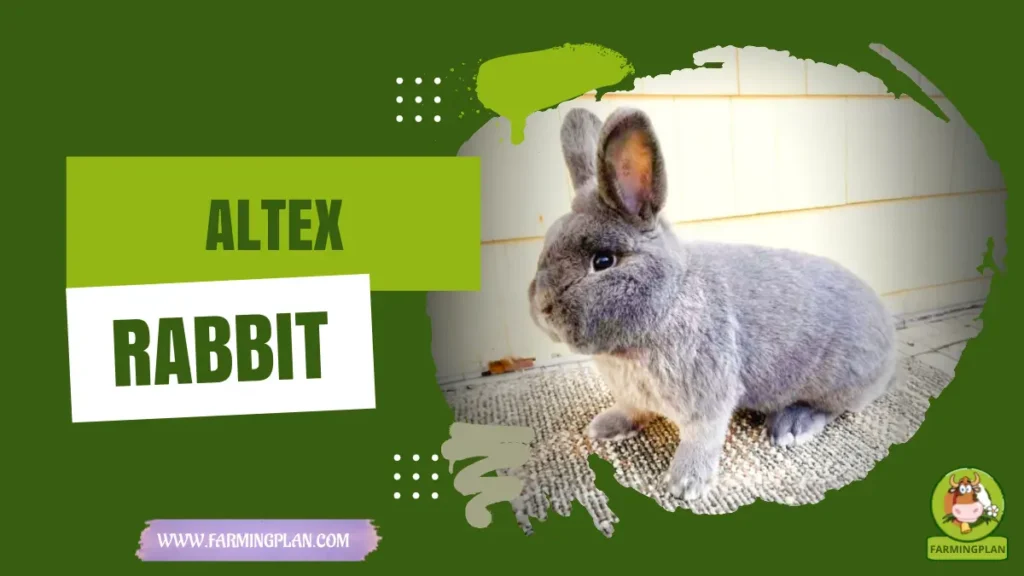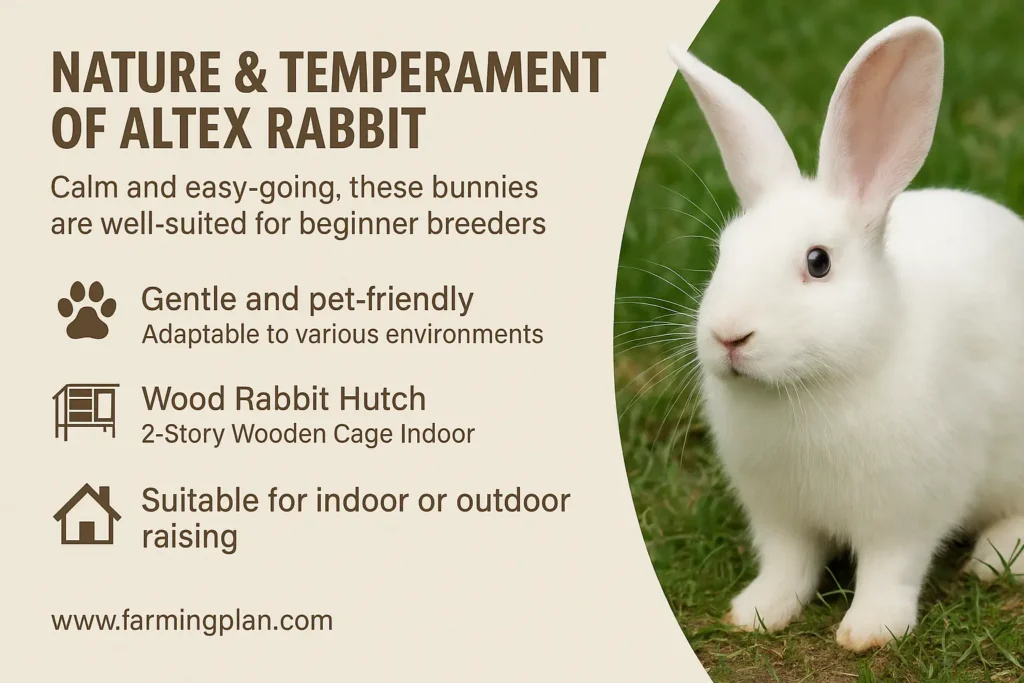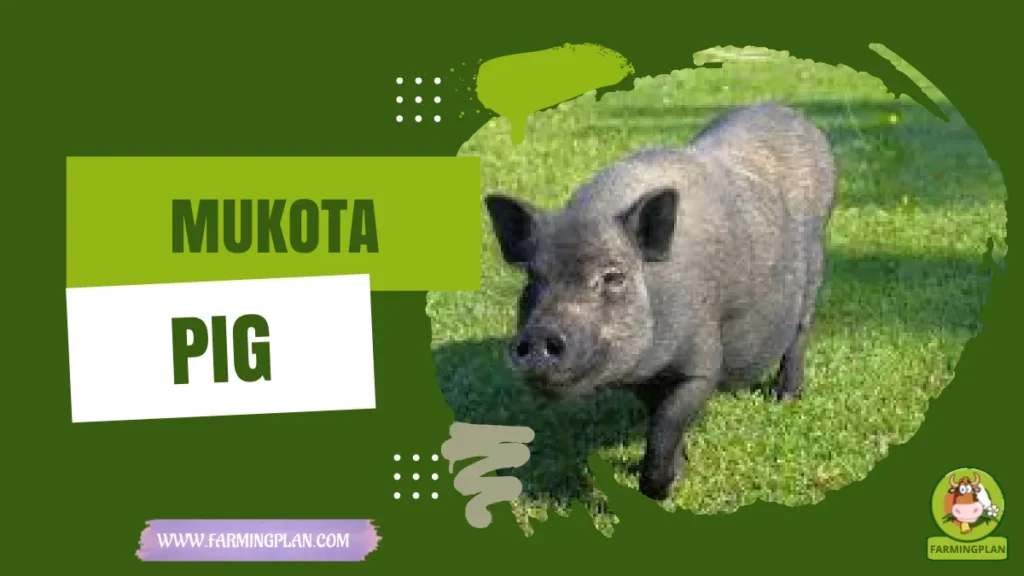When it comes to raising rabbits for meat or breeding, the Altex Rabbit stands out as one of my favorite choices. This breed combines impressive growth rates with a calm temperament, making it perfect for both beginners and seasoned breeders. Whether you’re a backyard farmer looking to expand your meat production or a hobbyist interested in quality rabbits, understanding the Altex Rabbit’s traits, care, and history can really boost your success. In this article, I’ll walk you through everything I’ve learned about the Altex Rabbit from its origins to detailed care tips so you can feel confident raising these bunnies in your own home or farm.

History & Origin of Altex Rabbit
The Altex Rabbit breed has a fascinating background that ties closely to serious breeding research. Developed originally at Texas A&M University, the Altex emerged from a goal to create a super-efficient meat rabbit. Breeders combined traits from fast-growing lines, including influences from Californian rabbits and other popular meat breeds. This focused effort gave rise to what some call a “super rabbit,” prized for its rapid growth and excellent meat quality.

I first heard about Altex through the Rabbit Rhythms newsletter, a great source for breeders tracking new lines and production tips. Over time, Altex rabbits gained popularity among farmers looking for consistent, market-ready fryers. Today, the breed enjoys a solid reputation in the meat production world, often recommended for those seeking robust animals with dependable litter sizes and strong growth rates.
Characteristics of Altex Rabbit
One of the first things that impress people about the Altex Rabbit is its size and build. These rabbits tend to be larger than many other breeds, with a strong, meaty frame that suits meat production perfectly. They usually sport white fur, much like the classic White rabbits you might have seen, but their body structure is much more suited for quick weight gain.

Altex bucks and does are both known for their sturdy builds. Bucks often show a bit more muscle definition, which breeders watch closely when selecting home-grown replacement bucks. I’ve noticed that Altex kits grow fast, hitting market weights faster than many other lines, making them popular in commercial settings. Their growth is steady and reliable from as young as 8 to 10 weeks old, perfect for anyone interested in efficient production.
Read More: Cashmere Lop Rabbit: The Ultimate Adorable and Devoted Pet
Nature & Temperament of Altex Rabbit
If you’re worried about personality, the Altex Rabbit won’t disappoint. These bunnies tend to be calm and pretty easy-going, which helps a lot when managing larger herds or when raising them around kids. I’ve found them to be gentle, which is great if you want a mix of meat production and a pet-friendly animal.

Their temperament also makes them well-suited for beginner breeders who might be a bit nervous handling animals. They’re adaptable to various environments, from simple Wood Rabbit Hutch setups to more elaborate 2-Story Wooden Rabbit Cage Indoor designs. This flexibility means you can raise Altex rabbits either indoors or outside, depending on your space and climate.
Food & Diet for Altex Rabbit
Feeding Altex rabbits properly is key to unlocking their growth potential. I recommend starting with high-quality pellets designed for meat rabbits, which provide the right balance of protein and fiber. Fresh vegetables like leafy greens also work well, but make sure to introduce these gradually to avoid digestive upset.
Water is just as important as food, so having a reliable Rabbit Drinker setup keeps your rabbits hydrated and healthy. During their first few weeks, especially between 8 and 10 weeks old, Altex kits require a diet rich in nutrients to hit their market grade weights. Avoid sudden changes in diet to keep their digestion smooth and prevent common issues like GI stasis.
Read More: American Sable Rabbit: Perfect Pet With A Gentle Heart
Usage & Purpose of Altex Rabbit
In my experience, the Altex Rabbit shines brightest in meat production. Farmers and breeders appreciate how quickly they mature into meaty fryers ready for market, often within 12 to 16 weeks. They’re also a top pick for those wanting consistent litter sizes and strong genetic lines for production rabbit purposes.
That said, these rabbits aren’t just for meat. Some hobbyists keep them as pets or for show, enjoying their calm demeanor and manageable size. If you’re breeding, managing litters carefully and selecting quality sire rabbits helps maintain a productive herd. Many breeders track story lines closely to ensure they get the best traits from each generation.
Special Features of Altex Rabbit
The Altex Rabbit carries some unique perks you won’t find in every breed. For one, their rapid growth and strong bones make them excellent candidates for sustainable meat production. I also admire their resistance to certain diseases when kept in good conditions, a real bonus for any backyard breeder.
Some breeders swear by sire-only line strategies with Altex rabbits to keep their gene pool strong and focused. Others enjoy the versatility of the breed—whether for complete litters or additional litter management. In some circles, they’re even nicknamed magic rabbits for how reliably they perform in production and temperament.
Read More: Checkered Giant Rabbit: A Gentle Giant Breed
Health Issues & Prevention for Altex Rabbit
Like all rabbits, Altex rabbits can face common health problems if not cared for properly. Respiratory infections and digestive issues like GI stasis are things I always watch out for. Clean housing is a must; I prefer sturdy setups like the BIRASIL Wood Rabbit Hutch to keep things tidy and dry.
Preventive care means regular health checks and a good diet. Vaccinations may vary by region, so check with your local vet. Keeping your rabbits stress-free and monitoring their behavior closely helps catch problems early, ensuring your Altex rabbits stay in top shape.
“Always Rotate Your Bucks And Does To Keep Your Herd Genetics Strong And Litters Healthy It’s A Simple Trick That Works Wonders!”
Step-by-Step Farming Guide for Altex Rabbit
Step 1: Setting Up the Housing
Start with a clean, secure home. I recommend Rabbit cages that offer good ventilation and enough space to move, like the 2-Story Wooden Rabbit Cage Indoor for indoor setups or sturdy Wood Rabbit Hutch for outdoor use. Make sure it’s predator-proof and easy to clean to keep your rabbits safe and healthy.
Step 2: Selecting Healthy Bucks and Does
Prefer healthy bucks and does that look strong and well-built. Watch out for signs of attention, no discharge from the eyes and a body that looks well-kept. Do not buy rabbits that seem unwell or have a bad coat. Older rabbits tend to do well in breeding, but younger rabbits can keep your herd healthy.
Step 3: Feeding and Water Management
Use a balanced pellet diet tailored for meat rabbits, and supplement with fresh greens gradually. Keep water fresh daily using a reliable Rabbit Drinker or water bottle. During growth phases, monitor feed intake to ensure your kits hit their market weight targets efficiently.
Step 4: Monitoring Growth and Health
Track weight weekly from the moment kits are born, aiming for 12 to 16-week-old fryers hitting target weights. Check for signs of illness or stress daily. Clean the hutches frequently to prevent disease and promote good hygiene.
Step 5: Managing Litters
Record weights weekly from the startup to help young fryers reach the target weights by their 12th or 16th week. Check every day to see if your pet is sick or feeling stressed. Regular cleaning of the hutches stops infections and encourages cleanliness for all pets.
Step 6: Preventive Health Maintenance
Keep your pet’s routine vet appointments and ensure all vaccinations are current. Regularly apply disinfectants to the cleaning of your animals’ cages and their eatable dishes. Take care not to miss parasites and treat them right away. Rabbits that are healthy develop faster and they make your work less demanding.
Step 7: Preparing Rabbits for Market or Pet Homes
After your Altex rabbits are the correct size, try to handle them carefully to avoid upsetting them. If you’re selling, make sure buyers obtain care instructions. To help your pets stay calm, keep up with their socialization.
Expert Tips & Best Practices for Raising Altex Rabbit
- Subscribe to Rabbit Rhythms e-newsletter and invest in Rabbit Husbandry info e-books for up-to-date advice.
- Rotate your home-grown replacement bucks regularly to maintain strong genetics.
- Maintain detailed records of your story lines to track improvements and successes.
- Start beginners off with a PullCrease 34 Pcs Rabbit Starter Kit Rabbit to cover all basics.
- Always focus on clean, comfortable housing like BIRASIL Wood Rabbit Hutch or similar to prevent health problems.
FAQ
What makes the Altex rabbit ideal for meat production?
Altex rabbits grow fast and develop a meaty, sturdy body ideal for market weight in a short time.
How fast do Altex rabbits grow to market weight?
They typically reach market-ready weight between 12 and 16 weeks with proper care.
What is the best diet for Altex rabbits?
High-quality pellets for meat rabbits, fresh greens, and clean water are essential for growth.
Are Altex rabbits good pets for families?
Yes, they have calm temperaments and adapt well to family environments.
How do I prevent common health problems in Altex rabbits?
Keep housing clean, provide balanced diets, and perform regular health checks.
Conclusion
Raising Altex rabbits offers a rewarding experience whether you’re farming for meat or breeding as a hobby. Their fast growth, calm nature, and strong genetics make them stand out among meat rabbit breeds. By providing proper housing, balanced nutrition, and attentive care, you can enjoy healthy, productive rabbits that meet your needs. From my experience, these rabbits are truly a smart investment for any serious breeder or backyard farmer looking for quality and reliability.


